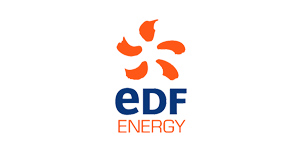SAS Analytics help EDF Energy reduce customer churn
EDF Energy is using SAS to analyse its customer base and evaluate the propensity of individuals to defect, using the insights gained to implement highly successful marketing strategies targeted at reducing churn.
EDF Energy (part of EDF Group) is one of Europe's largest power companies. The company employs 15,000 people at locations across the UK and is the biggest supplier of electricity by volume in the country, supplying gas and electricity to more than 5.5 million business and residential customers. The UK energy market is characterised by high levels of churn. Since the market was completely opened up to competition in 1999, 19 million customers have changed supplier, with many domestic consumers seeing savings of up to £150 on their energy bills. Currently, some 160,000 domestic consumers change electricity or gas supplier every week - an average switching rate of 38%.
The need to reduce churn is, therefore, a key operational focus for energy companies. With this in mind, EDF Energy's Customer Insight team uses SAS to deliver strategic analysis of data and gain new insight into the factors that motivate and drive customer behaviour. "we can meet customers' needs better by learning more about how they think, what they buy, what they use and how they want to interact with their supplier," says Clifford Budge, Customer Insight Manager, B2C Energy Sourcing and Customer Supply (ESCS), EDF Energy. SAS is helping the business to do precisely that.
It's all very well being able to manage two million records. It's when you have 400 different variables to test against that some solutions struggle – but SAS continues to perform well.
Clifford Budge
Customer Insight Manager
Managing churn using customer insight
EDF Energy has created a dedicated analytics function to focus on key areas including customer segmentation, churn assessment, probability modelling and product placement modelling. When the Customer Insight team was tasked with evaluating the technology marketplace and recommending a solution best suited to meeting its needs, including analysis on huge data volumes - data sets running into hundreds of millions of rows - its search led to SAS. Indeed, EDF Energy was already using SAS elsewhere in the organization and was happy with results being achieved.
The team’s primary focus was churn modelling: evaluating the propensity for customers to leave the organization. Modelling involved examining a range of key metrics including ‘life on supply’ (older customers are likely to be more loyal than younger ones) and overall interaction levels. To deliver this functionality, EDF Energy implemented a SAS® data management and predictive analytics platform. The first stage of the churn modelling process was to ensure the team has as much relevant data as possible. To support this, EDF Energy buys in third party data sets: attitudinal data to better understand customer attitudes, and lifestyle data with demographic details including people’s locations and household arrangements. Bringing these diverse data sources together is critical to optimize its modelling toolset.
Reducing losses: 'significant savings'
With SAS used to classify customer data and identify which customers are most likely to leave, EDF Energy then deploys a validation data set to monitor those customers. If they subsequently defect, the Customer Insight team takes the 'evidence' to the EDF marketing department and so help ensure it can prioritize customer communications based on identified risk. An additional focus is the company's 'dual fuel upgrade to reduce churn' program. "The aim is to understand which of our customers is currently 'electricity only' but are also mains gas capable: they can take dual fuel," explains Budge.
High-performance – and more targeted marketing
With new insights available into which types of customers are most likely to leave, EDF Energy is able to deploy more cost-effective targeted approaches to marketing. Without that knowledge, companies will have little understanding of their customer base and will be restricted to rolling out expensive broad brush marketing approaches such as global loyalty card schemes.
For EDF Energy, key benefits of SAS include its ability to incorporate a wide array of modelling techniques, including logistics regression, and its ability to process large data volumes. This allows it to minimise the risk taken on by many organisations that use analysis techniques to reduce data quantities and then restrict their analysis to a small, supposedly representative, data set. SAS' ability to handle multiple variables for testing purposes is also critical – in terms of faster and more effective operations, leading to higher quality outputs. "It's all very well being able to manage two million records," Budge says. "It's when you have 400 different variables to test against that some solutions struggle – but SAS continues to perform well."

Challenge
Identifying and reducing churn levels in a highly competitive market: the average switching rate is 38 percent.
Solution
A SAS® data access, data management and predictive analytics platform focused on churn and propensity modeling.
Benefits
The ability to quickly, easily and accurately evaluate large volumes of data, test against multiple variables, incorporate a broad range of modelling techniques including logistic regression – and so deliver new customer insight to help reduce churn and so have an impact on profitability.